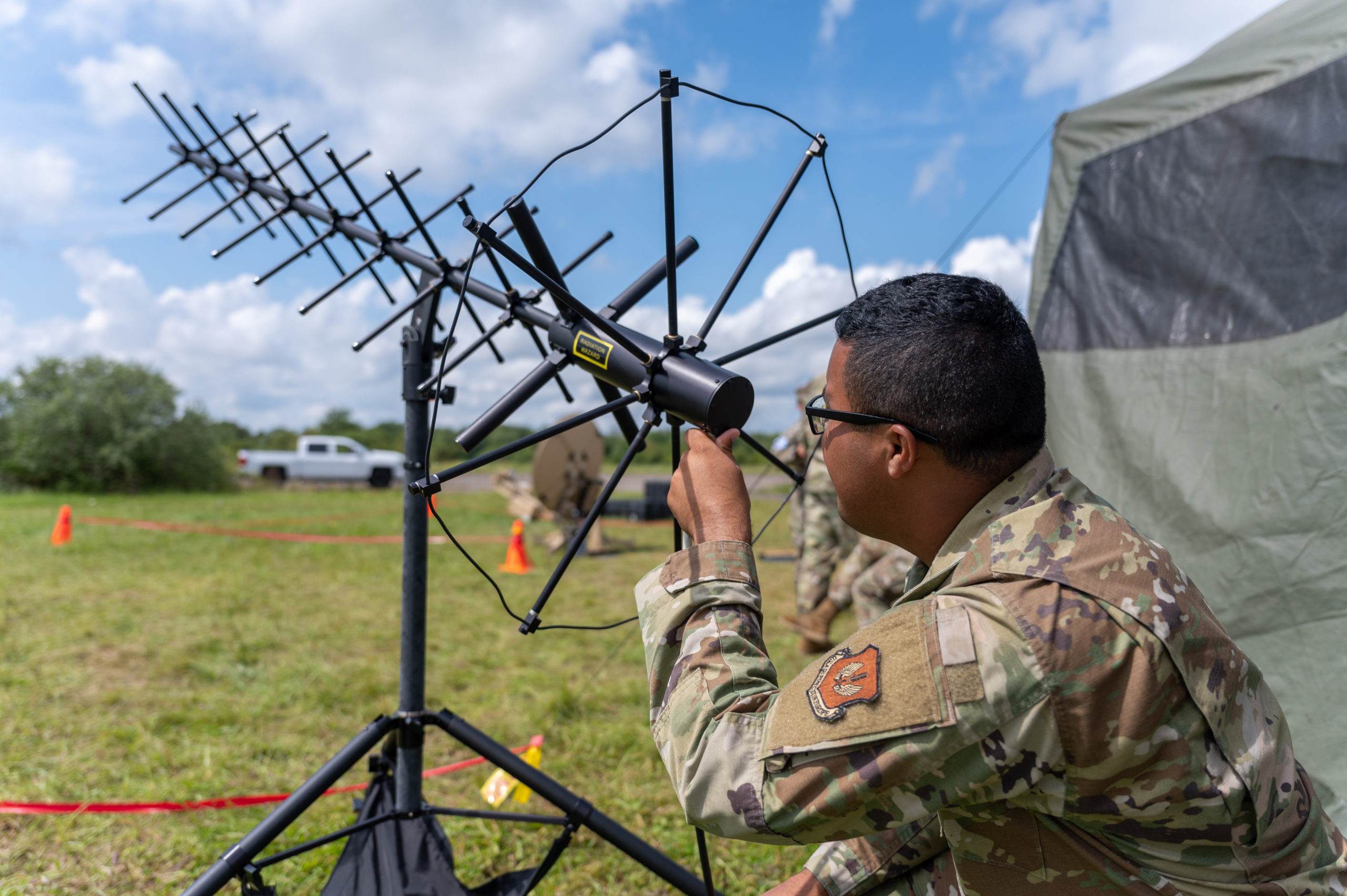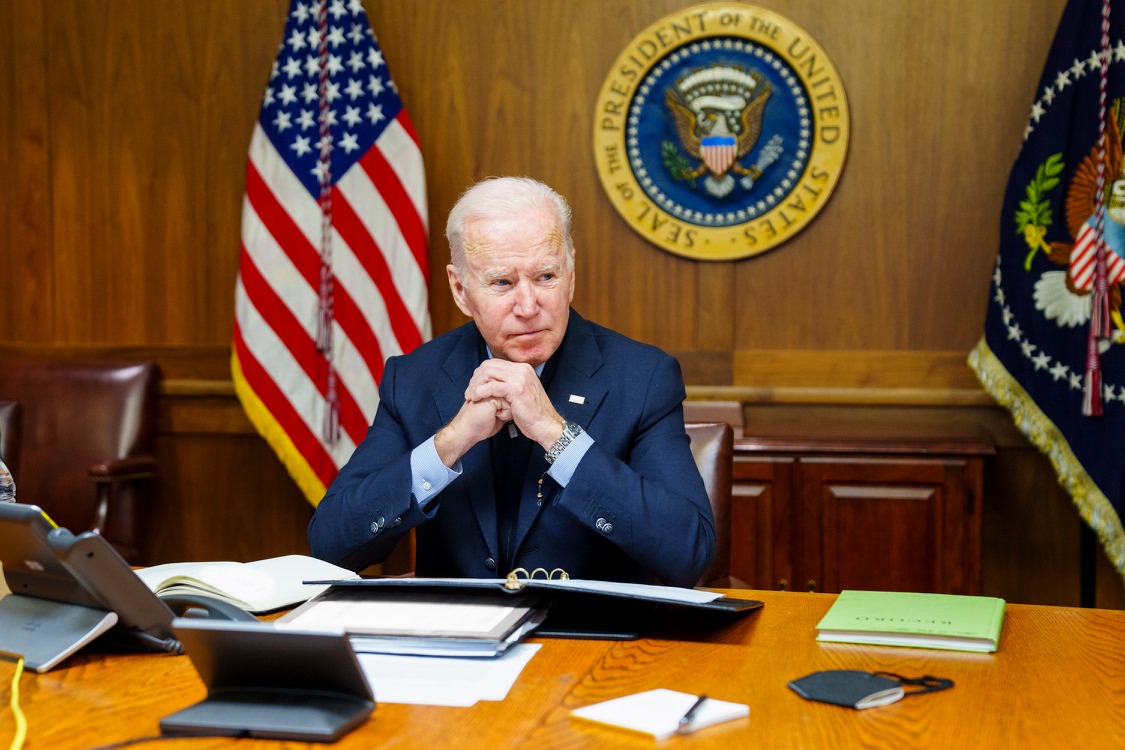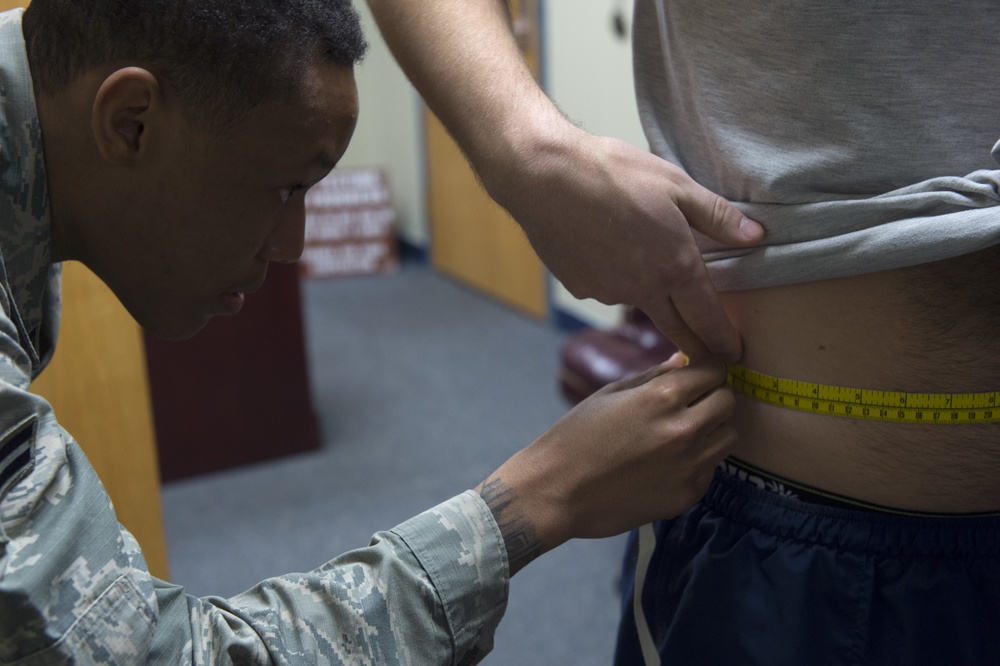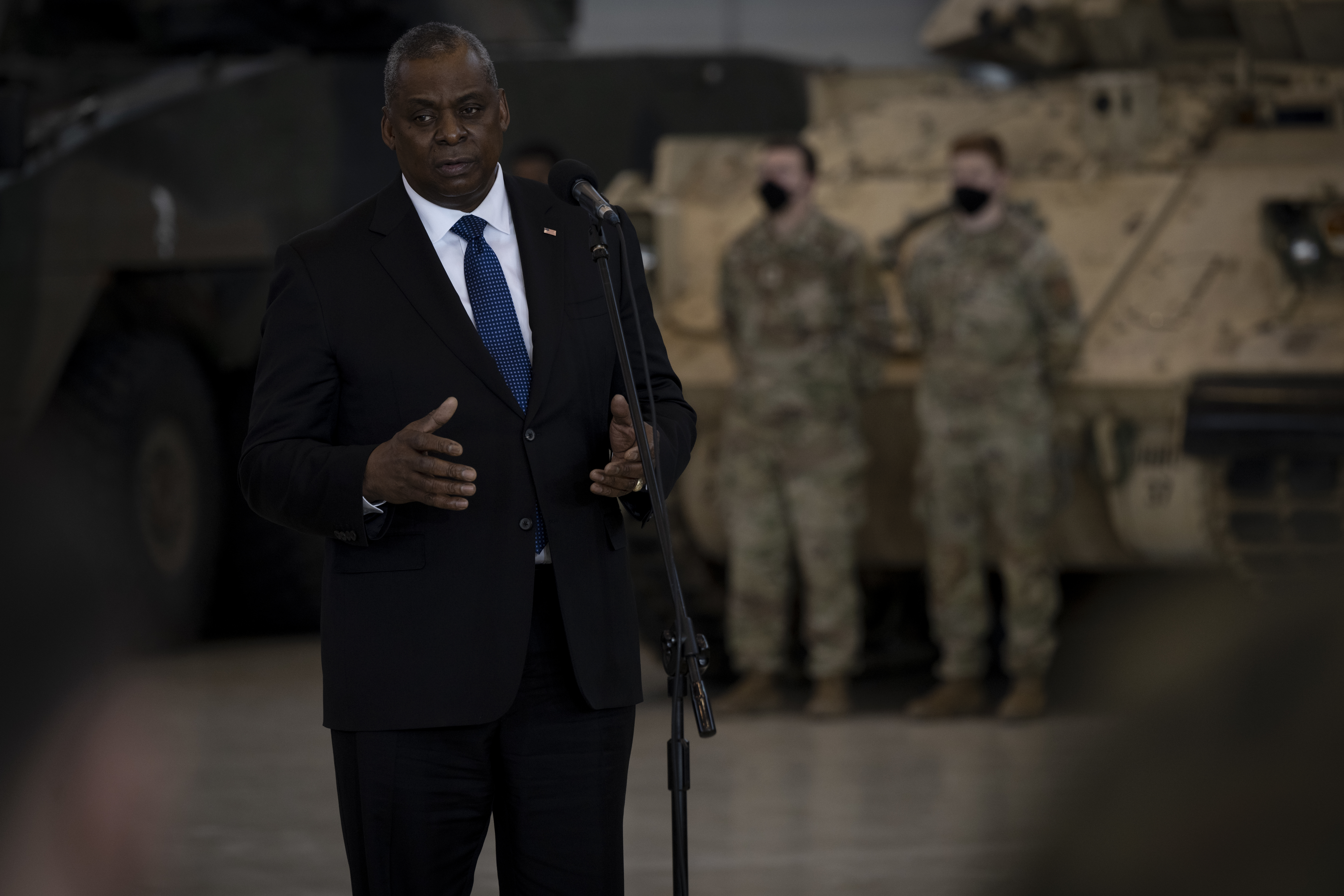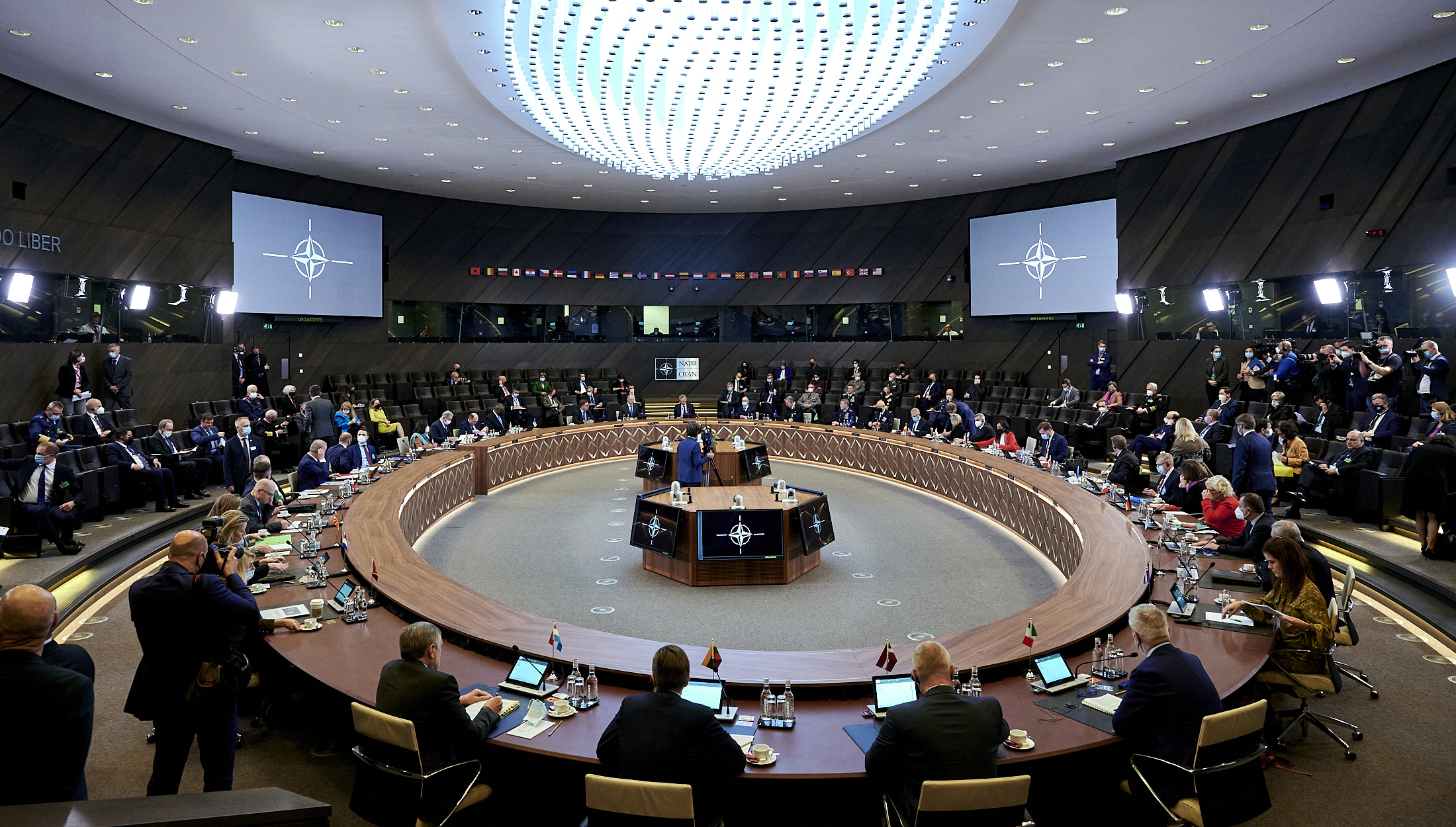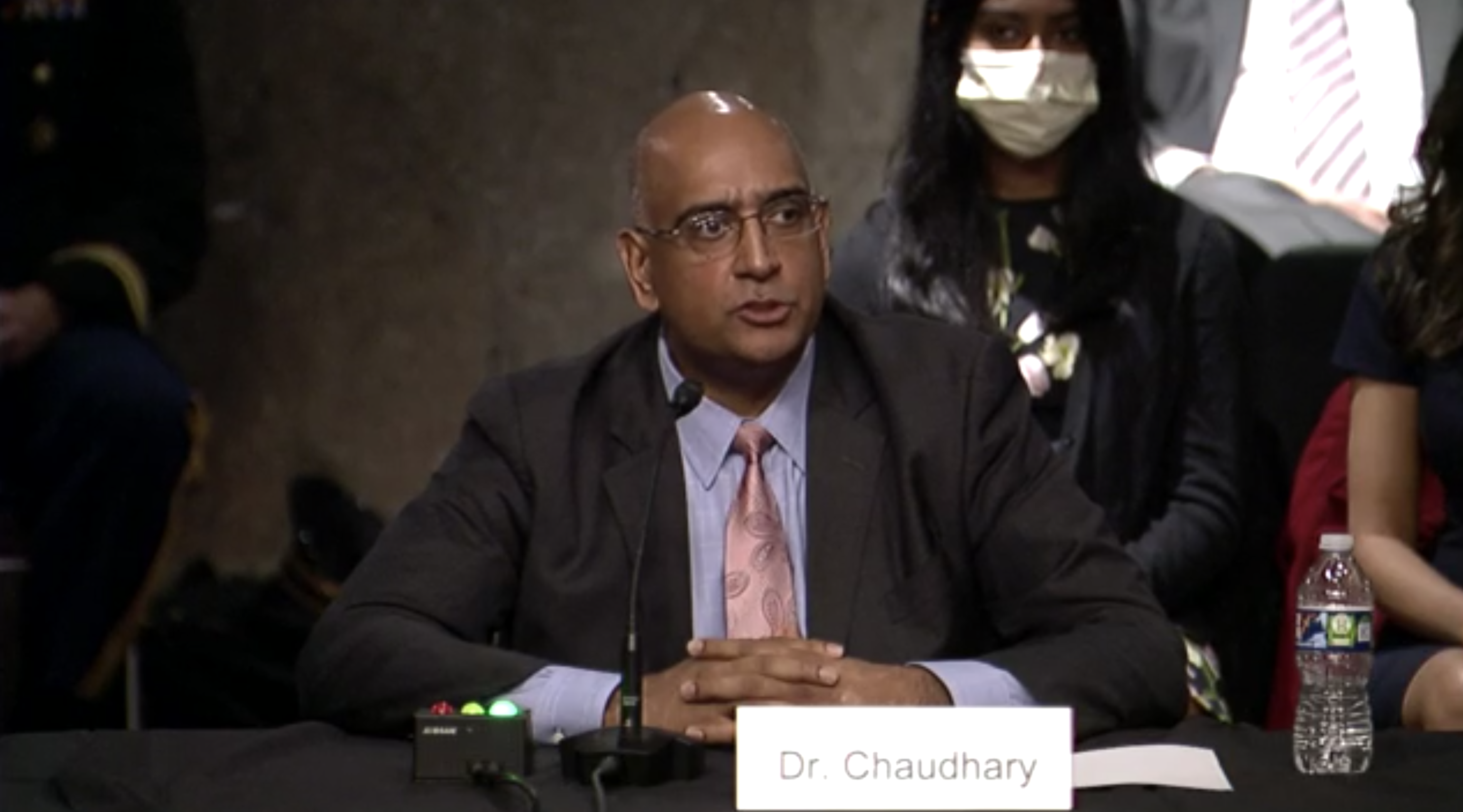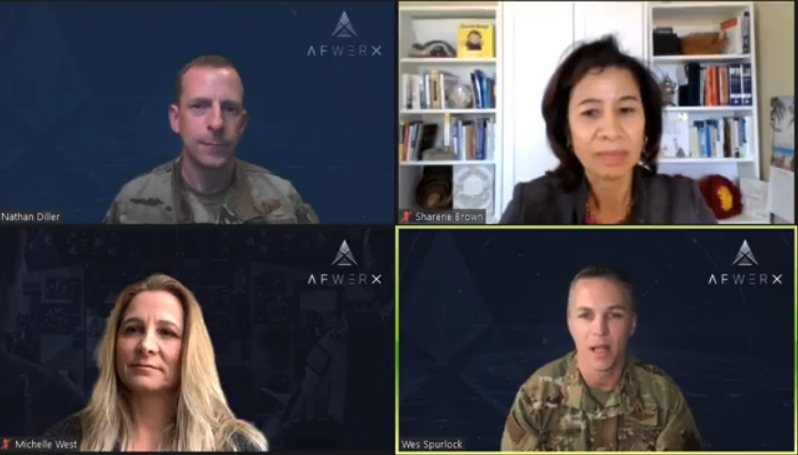Long neglect of electronic warfare and electromagnetic spectrum operations won’t be reversed quickly, especially without funding priority—and creative approaches are needed to get back in the game, experts said. However, there is top-down urgency to find solutions.
“I think we’re all in agreement: We’re not moving fast enough,” said Maj. Gen. Daniel L. Simpson, Air Force assistant deputy chief of staff for intelligence, surveillance, and reconnaissance, during an AFA Mitchell Institute for Aerospace Studies event Feb. 17. “So now the question is: What do you do? What do you go after to bring additional credibility to an integrated deterrence” while working under an interim national security strategy?
Simpson said Air Force Secretary Frank Kendall has rejected the Air Force’s draft electromagnetic spectrum, or EMS, operating concept—the implementation plan for the EMS strategy. Kendall is “not shy about giving feedback” and said the implementation plan “looked too much like a strategy” and lacked “hard impact, quantitative things to be able to do it. So the team is going back” with a new version, Simpson said. It’s “in draft and is working through all the widgets right now.”
Fixing EMS operations will require boosting the number of people working in the field, Simpson said.
“We have to … make up for 20 years of neglect,” he said. EMS operators “are very low density and in incredibly high demand, and that’s only going to increase in the future.” It will also require new investments that, so far, haven’t been a high budget priority.
“We’re limping along,” Simpson asserted. “There’s been no investment there.” In electromagnetic attack, “we absolutely gutted that, with the exception of the EC-130,” he said. The transition to the EC-37 is in progress, but “we’re trying to go to a platform-agnostic, software-designed, multiple-capable” system in which EMS capabilities are resident on practically all platforms.
“We need to go fast,” he insisted. “We’re two decades behind now. We’ve ceded that territory to the Chinese, and, to a lesser extent, the Russians, so we are going to have to get after that.”
“We need to put the dollars into this mission area,” said retired Lt. Gen. David A. Deptula, dean of the Mitchell Institute, noting “there’s a rumor” that the EC-37 buy will be cut, “in an era where the planned buy is only a fraction of what we need.”
The Air Force’s 350th Spectrum Warfare Wing, stood up in 2021, should become operational this fall, said Col. William Young, unit commander. The criteria to declare initial operational capability are “the three C’s,” he said: “capabilities, connections, and cognitive.” The wing is developing mission data and ‘missionware’ applications, he said, “which is a new way to rapidly deliver capability to aircraft in the same way that, today, you get apps to your iPhone.”
The wing is expanding networks and gaining “the ability to stitch together different heterogeneous systems that were never … intended to work together” but have always had “that latent capability to be combined into a composite system that gives you the tools you need to solve a particular, focused warfighter problem.”
The wing is also applying artificial intelligence and machine learning to the field—the “cognitive” aspect,” he said.
“So, if my team is able to pull all that together … that’s a positive step in terms of getting to where we want to go.”
Young added, “this is not PowerPoint stuff that’s years out … We’re doing that today, right now.” He said things are going faster because of the “alignment from the very top of the Air Force.” Kendall has made a priority of “cognitive EW (electronic warfare),” he said, and there is also a top-level push from Gen. Mark D. Kelly, head of Air Combat Command. The wing has also built a strong connection with the Air Force Research Laboratory, he said, and “that’s how we’re doing it.”
Panelists were divided over a long and vexing question: whether EMS is a fighting domain like air, sea, space, and cyber. But Young said the key thing is to “lay out a theory of victory and a mechanism [by which] to achieve that. And those ideas are absolutely in our concept.”
Deptula noted that new technologies offer “completely new and innovative ways of creating desired effects on our adversaries” and that, absent substantial new funding for EMS operations, that’s where the Air Force will have to look.
“We need to get away from … [the idea that] I need to have a jamming platform to be able to target radars,” Simpson said. “Can I get after that effect with some other means? Can I use the electromagnetic spectrum to deliver a cyber effect? That may give me some persistence … whatever the target may be.”
By having a “platform agnostic” system that is “reprogrammable” and to which “I can apply algorithms,” “we may be able to get to a solution that is adaptable” and useful both in everyday competition with adversaries as well as in wartime. They must also be “survivable in the high-end fight.”
“When I make investments,” he said, they have to meet Kendall’s insistence that they “scare China” and have a deterrent effect.
Young said one idea is to turn cellphones into jamming devices. All cellphones, he said, are essentially “programmable radios” and could be made to broadcast in such a way as to generate jamming power.
“We might be able to take advantage of the transmit capability to flood the airwaves at particular frequencies,” he said.
Retired Maj. Gen. Kenneth R. Israel, former assistant secretary of defense for airborne reconnaissance, said modern air defenses are pushing “Blue” forces “further and further back.”
“If you’re pushed back far enough, there’s not an onboard jammer that’s going to be able to make a difference …Physics is physics.” So the solution may be, as Kendall has suggested, “maybe you load up unmanned systems—an expendable platform—with a jammer.” It’s been done before, he said, and Kendall’s new unmanned escort for fighters may be the avenue.
“Sending these assets out to go ahead in a one-way mission, neutralize these key platforms that our adversaries are using and kind of blind them. And that’s what we want to do.”
But “fundamentally, the whole portfolio is short,” Israel said, “and you’re not going to be able to make significant improvements on the cheap. You just can’t do it.”
An increasing number of members of Congress appreciate the need for investment in EMS operations, he said, but in an environment with a half-year continuing resolution, “if you’re trying to recover from an era of thinning resources in this mission area, it’s going to be a hard sell when you basically have no discretionary income.” Inflation will only compound the problem, he said. Consequently, “you have to look for high-leverage areas.”
Israel said he’s hopeful that Kendall and Heidi Shyu, undersecretary of defense for research and engineering, are laying out sound technology plans for high-payoff investments. But such Pentagon leadership is hampered by vacancies.
“We’re missing key advocates in key positions” in the Office of the Secretary of Defense, he said. Filling that vacuum, to some extent, he said, has been U.S. Strategic Command.
Ken Dworkin, an electronic combat expert at Booz Allen Hamilton, said, “I think Congress does get it,” but “I don’t know if that translates into … effective action.”
Fifteen years ago, he said, there was a hearing to discuss an electronic warfare report, which “concluded that what needed to happen was” an increase in EW practitioners—a new “pipeline of training on EW”—along with increased investment in systems and a boost to research-and-development budgets expressly for electronic warfare. A year ago, in similar testimony, a congressman lamented that the comments were the same and wondered, if another report comes out 15 years from now, if “it won’t say the same thing? I think that was kind of a mic-drop moment.”
